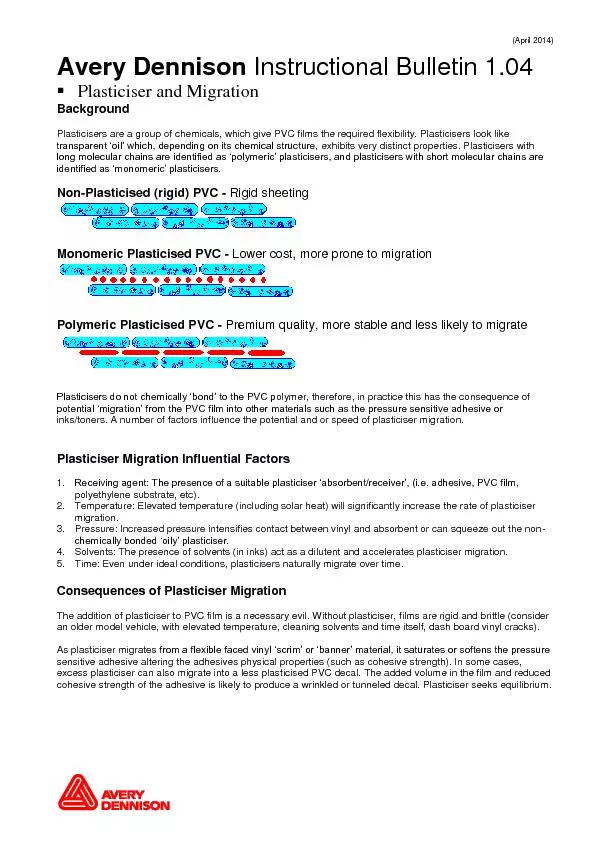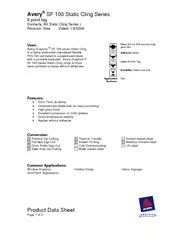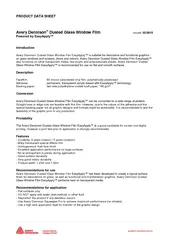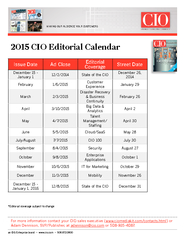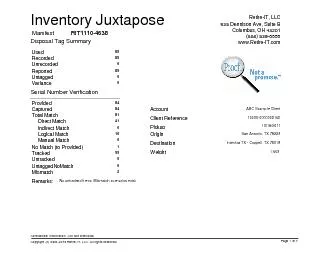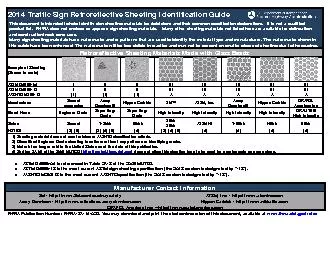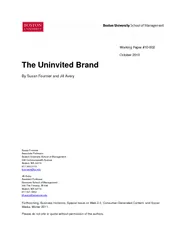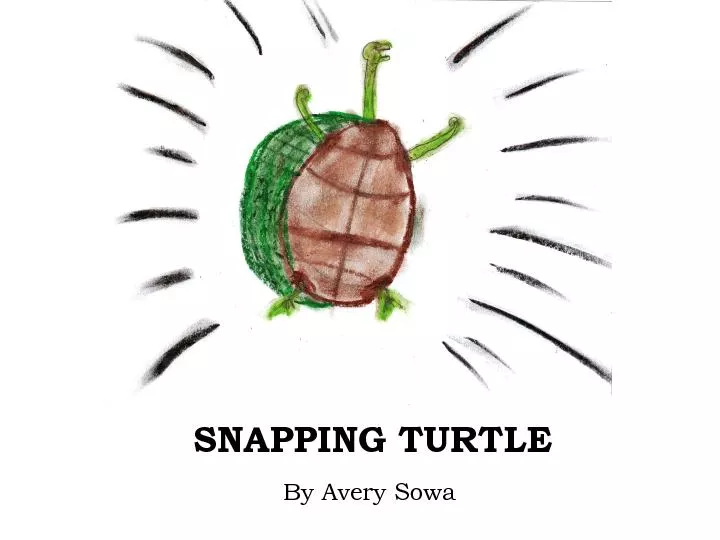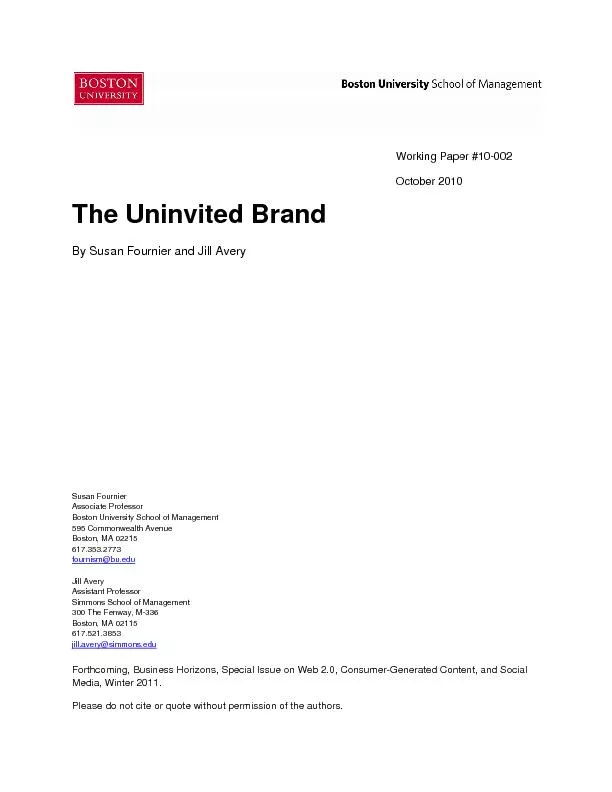PDF-Avery Dennison
Author : olivia-moreira | Published Date : 2016-07-10
April 20 1 4 Instructional Bulletin 104 xF0A7 Plasticiser and Migration Background Plasticisers are a group of chemicals which give PVC films the required flexibility
Presentation Embed Code
Download Presentation
Download Presentation The PPT/PDF document "Avery Dennison" is the property of its rightful owner. Permission is granted to download and print the materials on this website for personal, non-commercial use only, and to display it on your personal computer provided you do not modify the materials and that you retain all copyright notices contained in the materials. By downloading content from our website, you accept the terms of this agreement.
Avery Dennison: Transcript
Download Rules Of Document
"Avery Dennison"The content belongs to its owner. You may download and print it for personal use, without modification, and keep all copyright notices. By downloading, you agree to these terms.
Related Documents

